Milwaukee 7200-20 Handleiding
Milwaukee
Nietmachine
7200-20
Bekijk gratis de handleiding van Milwaukee 7200-20 (13 pagina’s), behorend tot de categorie Nietmachine. Deze gids werd als nuttig beoordeeld door 68 mensen en kreeg gemiddeld 4.5 sterren uit 34.5 reviews. Heb je een vraag over Milwaukee 7200-20 of wil je andere gebruikers van dit product iets vragen? Stel een vraag
Pagina 1/13

Cat. No. / No de cat.
7200-20
ROUND HEAD FRAMING NAILER
CLOUEUSE À BANDE POUR CHARPENTE
CLAVADORA DE CABEZA REDONDA
OPERATOR'S MANUAL
MANUEL de L'UTILISATEUR
MANUAL del OPERADOR
WARNING To reduce the risk of injury, user must read and understand operator's manual.
AVERTISSEMENT An de réduire le risque de blessures, l'utilisateur doit lire et bien
comprendre le manuel.
ADVERTENCIA Para reducir el riesgo de lesiones, el usuario debe leer y entender el manual.

2
GENERAL SAFETY INSTRUCTIONS
DANGER
Important safety instructions.
Save these instructions pertaining
to a risk of injury or death.
WARNING
When using tools, basic precau-
tions should always be followed,
including the following:
GENERAL
•To reduce the risk of injury, read all instructions
before using the tool.
WORK AREA
•Keep the work area clean and well lighted. Cluttered
benches and dark areas increase the risk of injury.
•Do not operate the tool in explosive atmospheres,
such as in the presence of ammable liquids,
gases, or dust. The tool is able to create sparks
resulting in the ignition of the dust or fumes.
•Keep bystanders, children, and visitors away while
operating the tool. Distractions are able to result in
the loss of control of the tool.
•Know what is behind your workpiece. A fastener
could travel through the workpiece and out the other
side, striking a bystander and causing serious injury.
•
DANGER
Avoid performing operations where
the fastener may contact hidden
wiring. Contact with a “live” wire will make exposed
metal parts of the tool “live” and shock the operator,
resulting in serious injury or death. Contact a qualied
electrician to ensure a safe work environment exists.
PERSONAL SAFETY
•Stay alert. Watch what you are doing and use common
sense when operating the tool. Do not use the tool
while tired or under the inuence of drugs, alcohol, or
medication. A moment of inattention while operating the
tool increases the risk of injury to persons.
•Dress properly. Do not wear loose clothing or jewelry.
Contain long hair. Keep hair, clothing, and gloves away
from moving parts. Loose clothes, jewelry, or long hair
increases the risk of injury to persons as a result of
being caught in moving parts.
•Avoid unintentional starting. Remove nger from
the trigger when not driving fasteners. Be sure the
trigger is not pulled before connecting to the air supply.
Do not carry the tool with your nger on the trigger or
connect the tool to the air supply with the trigger pulled.
•Do not overreach. Keep proper footing and balance
at all times. Proper footing and balance enables better
control of the tool in unexpected situations.
•Use safety equipment. A dust mask, non-skid safety
shoes and a hard hat used for appropriate conditions
will reduce personal injuries.
•The operator and other people in the work area
must wear eye protection in accordance with ANSI
Z87.1. Eye protection does not t all operators in the
same way. Make sure the eye protection chosen has
side shields or provides protection from ying debris
both from the front and sides. The employer is responsi-
ble for enforcing the use of eye protection by the opera-
tor and other people in the work area. When required,
wear head protection in accordance with ANSI Z89.1.
•Always wear ear protectors when using the tool
for extended periods. Prolonged exposure to high
intensity noise is able to cause hearing loss.
•Do not carry an air hose or a tool connected to an air
hose when climbing ladders, rigging or scaolding.
•Do not attach an air hose or tool connected to an
air hose to your body when working at elevated
heights. Attach the hose to the structure to reduce
the risk of loss of balance and injury if the hose shifts.
•Always assume that the tool contains fasteners.
Careless handling of the tool can result in unexpected
ring of fasteners and personal injury.
•Do not point the tool towards yourself or anyone
nearby. Unexpected triggering will discharge the fas-
tener causing an injury.
•Do not nail on top of another nail. This can cause
the nail to be deected and hit someone, or cause the
tool to react and result in a risk of injury to persons.
TOOL USE AND CARE
•Use clamps or another practical way to secure and
support the workpiece to a stable platform. Holding
the work by hand or against the body is unstable and
is able to lead to loss of control.
•Do not force the tool. Use the correct tool for the
application. The correct tool will do the job better and
safer at the rate for which the tool is designed.
•Do not use the tool if the trigger does not turn the
tool on or o. Any tool that cannot be controlled with
the trigger is dangerous and must be repaired.
•Disconnect the tool from the air source, then empty
the magazine before making adjustments, doing
tool maintenance, clearing jams, touching the
workpiece contact or tool is outside your supervi-
sion or control. Verify the tool is empty and there is no
residual pressure in the tool prior to performing these
actions. Such precautionary measures reduce the risk
of injury to persons.
•Disconnect the tool from the power source when
the fastener jams in the tool. While removing a
jammed fastener, the tool may be accidentally activated
if it is plugged in.
•Use caution while removing a jammed fastener.
The mechanism may be under compression and the
fastener may be forcefully discharged while attempting
to free a jammed condition.
•Store idle tools out of reach of children and other
untrained persons. A tool is dangerous in the hands
of untrained users.
•Maintain the tool with care. A properly maintained
tool reduces the risk of injury. If the tool has been
dropped, received a sharp blow, been run over, etc.,
perform the "Required Daily Testing" before further use.
•Check for misalignment or binding of moving parts,
breakage of parts, and any other condition that af-
fects the tool’s operation. If damaged, have the tool
serviced before using. Many accidents are caused by
poorly maintained tools. There is an increased risk of
the tool bursting if the tool is damaged.
•Use only those fasteners specically recommend-
ed. Fasteners not identied for use with this tool by the
tool manufacturer are able to result in a risk of injury
to persons or tool damage when used in this tool. See
the "Specications" section for fastener requirements.
•Do not use this tool for fastening electrical cables.
It is not designed for electric cable installation and
may damage the insulation of electric cables thereby
causing electric shock or re hazards.
•Use only accessories that are identied by the
manufacturer for the specic tool model. Use of an
accessory not intended for use with the specic tool
model, increases the risk of injury to persons.
•Do not attempt to modify tool or defeat safety
measures. Serious injury could occur.
SERVICE

4
ASSEMBLY
WARNING
Disconnect the air supply from the
tool and remove fastener strips
before changing or removing accessories. Only
use accessories specically recommended for
this tool by the manufacturer. Others may be
hazardous.
The operator and other people in the work
area must wear eye protection in accordance
with ANSI Z87.1. Eye protection does not t all
operators in the same way. Make sure the eye
protection chosen has side shields or provides
protection from ying debris both from the front
and sides.
No-Mar Pad
The No-Mar Pad on the nose of the tool protects
the workpiece when the workpiece contact is com-
pressed during actuation. The pad can be removed
and replaced.
1. -Before removing or replacing no-mar pads, dis
connect the air supply from the tool and remove
fastener strips.
2. To remove the pad, pull the pad open and away
from the toe-nailing claw.
3. Storage for an additional pad is available on the
magazine of the tool.
4. To replace the pad, t it into place over the points
of the claw.
Exhaust
The exhaust cap can be adjusted to direct the ex-
haust as desired. Turn the exhaust cap to the desired
locking position.
Removing and Installing the Rafter Hook
Rafter hook
Front of tool
End cap
Screw (2)
3/8" NPT
quick
connector
To remove the hook:
1. Rotate the hook until it snaps into one of the
preset positions.
2. Remove the two mounting screws using the
wrench provided.
3. Pull the hook o the rear of the tool.
To install the hook:
1. Align the spring-loaded post on the hook with a
slot on the rear of the tool.
2. Slide the hook onto the tool, making sure the hook
points toward the front of the tool. Push the hook
up against the end cap.
3. Install the two mounting screws using the wrench
provided. Tighten securely.
4. Verify that the hook is installed correctly by rmly
pulling the hook toward the air inlet. It must not
move.
Lubricating the Tool
Lubricate the tool with air tool lubricant before con
SPECIFICATIONS
Cat. No. 7200-20 ....................................................
Operating Pressure min. 70 PSI .............................
max. 120 PSI
Fastener Length min. 2" .........................................
max. 3.5"
Collation Angle........................................... 20°-22°
Fastener Size (Diameter) .................... min. 0.113"
max. 0.148"
Air Consumption 0.16 ft .............. 3/cycle at 100 PSI
Air Inlet 3/8" NPT ....................................................
Magazine Capacity ...............................64-72 nails
Recommended Ambient
Operating Temperature 0°F to 125°F ...................
SYMBOLOGY
Read operator's manual
Wear eye protection
Keep hands away
Single Sequential Actuation
Contact (Bump) Actuation
TERMINOLOGY
Actuate
To cause movement of the tool component(s) in-
tended to drive a fastener.
Actuation System
The use of a trigger, workpiece contact and/or other
operating control, separately or in some combination
or sequence, to actuate the tool.
•Single sequential actuation - An actuation system
that requires the workpiece contact and then the
trigger to be activated in a specic sequence to drive
a fastener. Additional actuation can occur when the
trigger is released and reactivated.
•Contact actuation - An actuation system that re-
quires the workpiece contact and the trigger to be
activated in any sequence to drive a fastener. Addi-
tional actuation can occur when either the workpiece
contact or the trigger is released and reactivated.
•Selective actuation - An actuation system that
allows selection of actuation systems: single se-
quential actuation or contact actuation.
Fastener
A staple, pin, brad, nail, or other fastening device which
is designed and manufactured for use in the tools.
Jam
An obstruction in the feed or drive areas of the tool.
Workpiece Contact
An operating control element on the tool intended to
be activated by the workpiece to be fastened.
Product specificaties
| Merk: | Milwaukee |
| Categorie: | Nietmachine |
| Model: | 7200-20 |
Heb je hulp nodig?
Als je hulp nodig hebt met Milwaukee 7200-20 stel dan hieronder een vraag en andere gebruikers zullen je antwoorden
Handleiding Nietmachine Milwaukee

19 Augustus 2025
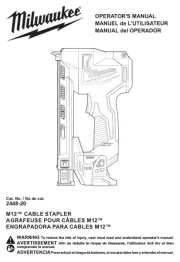
18 Augustus 2025
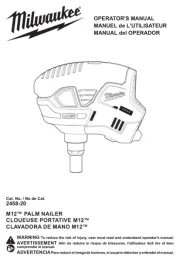
18 Augustus 2025
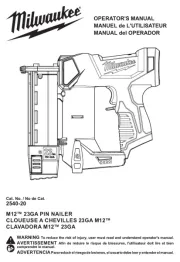
18 Augustus 2025
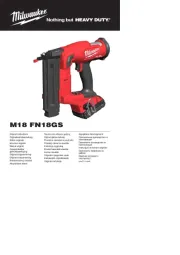
4 Augustus 2025
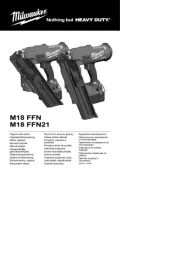
4 Augustus 2025
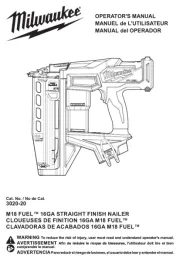
14 Juli 2025
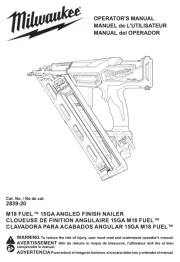
14 Juli 2025
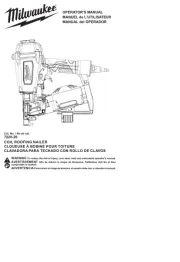
14 Juli 2025
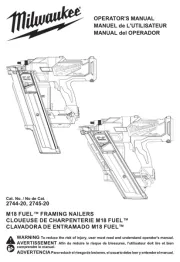
14 Juli 2025
Handleiding Nietmachine
- Bosch
- Hikoki
- Silverline
- MSW
- Rapoo
- Meister Craft
- President
- Parkside
- Dedra
- DeWalt
- Iluv
- Full Boar
- Sun Joe
- Rexel
- Surtek
Nieuwste handleidingen voor Nietmachine
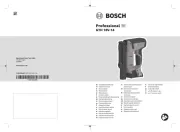
16 September 2025
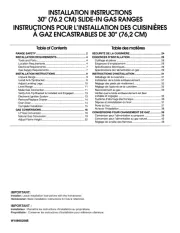
10 September 2025
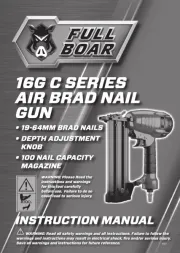
2 September 2025
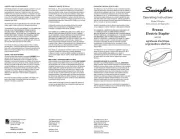
2 September 2025
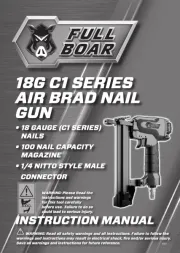
1 September 2025
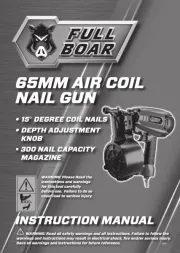
1 September 2025
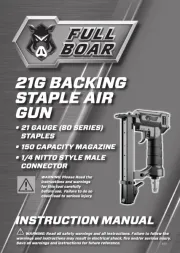
1 September 2025
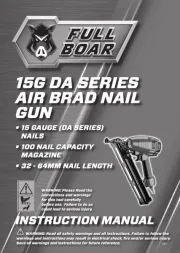
1 September 2025
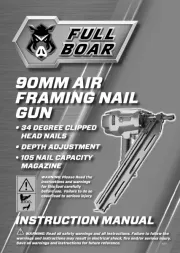
1 September 2025
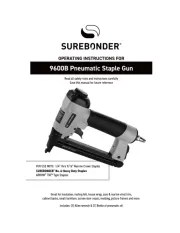
26 Augustus 2025